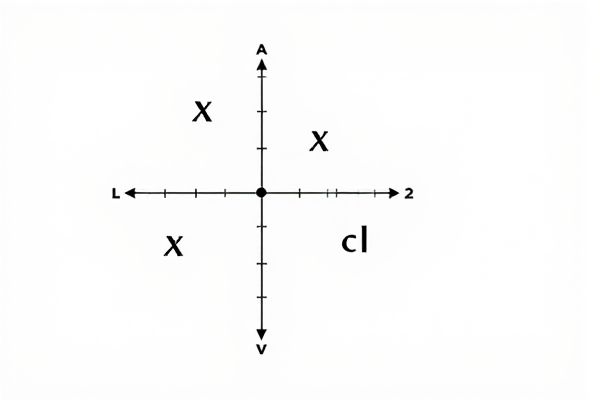
Generate precise random XY coordinates quickly and effortlessly with our intuitive online tool designed for seamless usability. Customize your range and quantity to fit any project needs, from mapping to gaming. Experience accuracy and convenience at your fingertips, making coordinate generation faster than ever.
Online tool for random xy coordinates generator
Below are several samples of a random XY coordinates generator prepared for you to use and customize. You can enter your own list of coordinates and easily randomize them with a single click. After randomization, you will receive a randomized list along with one selected value to use.Data Source
Single Result
Multiple Results
Introduction to Random XY Coordinates Generators
Random XY coordinates generators create pairs of x and y values within specified ranges, enabling the simulation of points in a two-dimensional space for applications like graphics, gaming, and data analysis. These generators use algorithms or functions to ensure uniform or customized distribution patterns of coordinates, facilitating tasks such as scatter plot creation or spatial randomness. Efficient random XY coordinate generation supports diverse fields including computer vision, procedural content generation, and statistical sampling.
Applications of Random XY Coordinates in Real Life
Random XY coordinates generators play a critical role in simulations for computer graphics, enabling the creation of realistic textures, particle effects, and procedural landscapes. These generators facilitate geographic information systems (GIS) by modeling spatial distributions and random sampling for environmental analysis. In robotics, they are essential for path planning and obstacle avoidance by simulating random target locations within predefined areas.
Core Principles Behind Random XY Coordinate Generation
Random XY coordinate generators rely on algorithms that produce pairs of numerical values within defined spatial boundaries, ensuring uniform distribution across the specified range. Core principles include the use of pseudorandom number generators (PRNGs) that simulate randomness through deterministic mathematical functions, maintaining statistical independence and avoiding patterns. Accurate scaling and normalization techniques transform raw random values into meaningful coordinates for applications such as simulations, gaming, and spatial analysis.
Popular Algorithms for Generating Random XY Points
Popular algorithms for generating random XY coordinates include the Uniform Distribution method, which produces points evenly spread across a defined rectangular area, and the Polar Coordinate approach that converts random angles and radii into Cartesian coordinates for circular or elliptical distributions. The Gaussian Distribution algorithm creates clusters of points around a mean position with controlled variance, ideal for modeling real-world spatial randomness. Quasi-random sequences like Sobol or Halton are employed to generate low-discrepancy points for improved uniformity in simulations or sampling tasks.
Programming Languages Commonly Used for XY Points Generation
Python, JavaScript, and C++ are commonly used programming languages for generating random XY coordinates due to their extensive libraries and efficient random number generation functions. Python's libraries like NumPy and random provide easy-to-use tools for generating coordinate points, while JavaScript leverages Math.random for coordinate generation in web applications. C++ offers high performance and control, ideal for generating large sets of XY points in computational geometry or simulations.
Input Parameters for Custom Coordinate Ranges
Custom coordinate ranges for a random XY coordinates generator require precise input parameters including minimum and maximum values for both X and Y axes. Defining integer or floating-point boundaries allows users to tailor the output to specific spatial dimensions, ensuring coordinates fall within desired geographic or Cartesian limits. Incorporating validation for input parameters prevents invalid ranges, optimizing the generator's accuracy for applications like simulations, mapping, or graphical plotting.
Visualizing Random XY Coordinates on Graphs
Visualizing random XY coordinates on graphs enhances the analysis of spatial data distribution and pattern recognition. Utilizing tools like Matplotlib or Plotly allows for dynamic plotting, where random points are generated within specified ranges to create scatter plots or heat maps. This graphical representation aids in identifying clusters, trends, and outliers in datasets for fields ranging from geographic information systems to machine learning simulations.
Performance Considerations in Large-Scale Generation
Efficient random XY coordinates generation in large-scale applications demands optimized algorithms that minimize computational overhead and memory usage. Utilizing spatial data structures such as quadtrees or grids can accelerate point validation and reduce collisions, enhancing performance. Parallel processing and vectorized operations further expedite the generation process, enabling the handling of millions of coordinates with minimal latency.
Security Aspects and True Randomness in Generators
A secure random XY coordinates generator relies on cryptographically strong algorithms to ensure unpredictability and resistance to manipulation or prediction attacks. True randomness in coordinate generation is achieved through hardware-based entropy sources such as quantum phenomena or atmospheric noise, which provide genuinely unpredictable values unlike pseudo-random number generators. Implementing secure seeding mechanisms and continuous entropy evaluation enhances the integrity of coordinate outputs, ensuring their suitability for critical applications like secure mapping, gaming, or privacy-preserving location services.
Best Practices for Implementing XY Coordinates Generators
Implementing a random XY coordinates generator requires ensuring uniform distribution across the defined coordinate space to avoid clustering and bias. Efficient algorithms such as the use of pseudo-random number generators (PRNGs) with seed control provide reproducibility and consistent randomness quality. Validating coordinate bounds dynamically and incorporating error handling improves robustness and integrates seamlessly with spatial applications.
 azrandom.com
azrandom.com